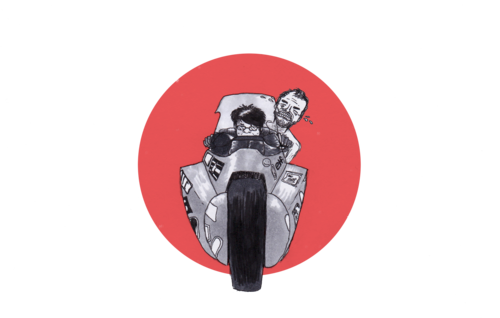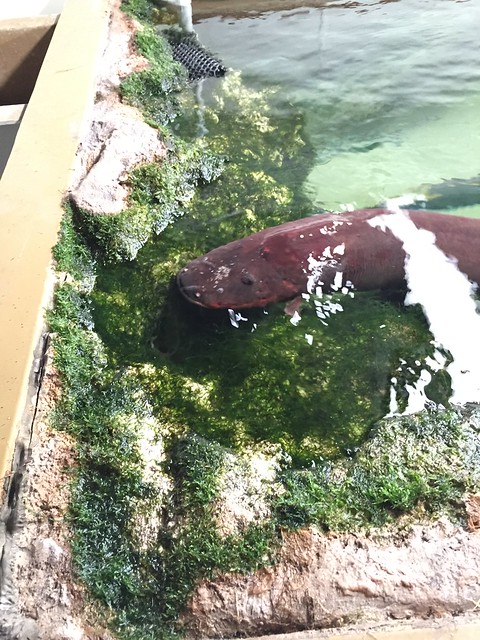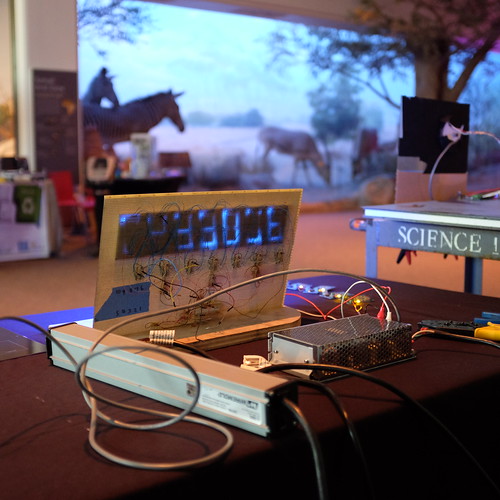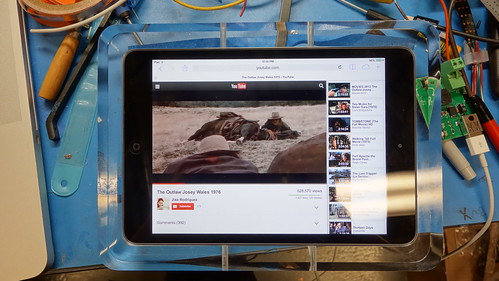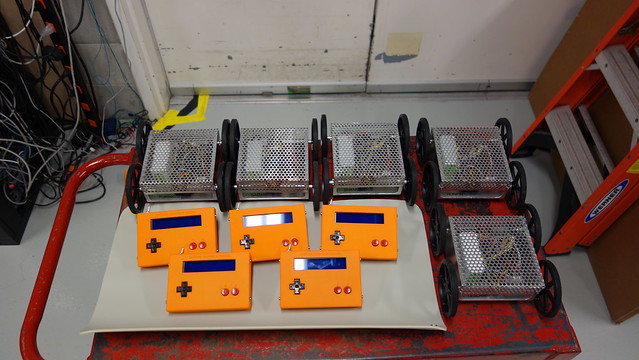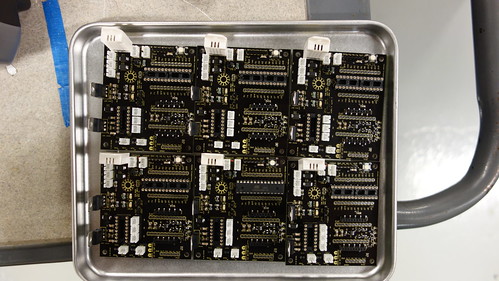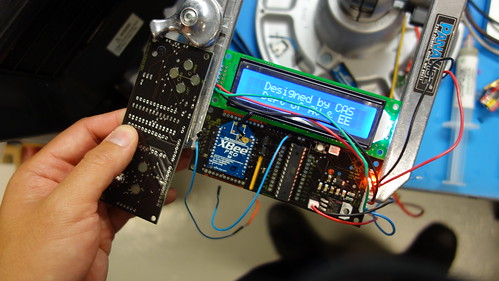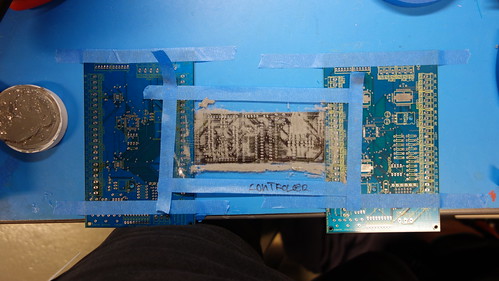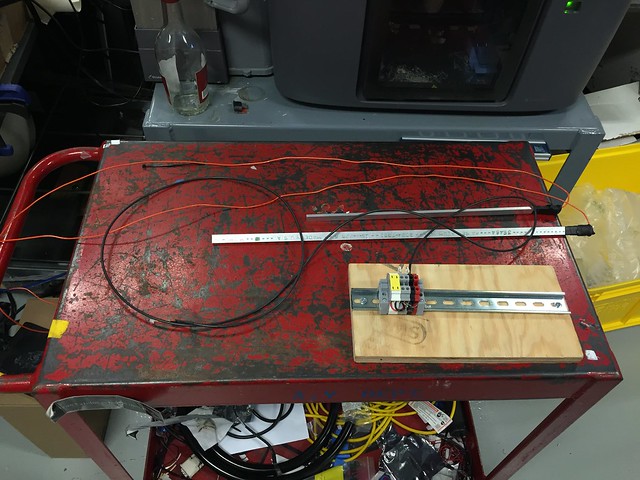
cute, but never in focus...
Electric eels are famous for their electricity, but they are also just plain cute! When seen from above, they appear to be smiling! Nevertheless, their attraction packs 600v of AC power!
Wild Kratts asked if we could power a lightbulb with the Steinhart Aquarium's eel duo
Stella and Stan. The internet is a litter with museums that have eel powered exhibits. But in nearly every case, the eel is simply acting as a trigger voltage and not as a voltage source.
To harvest our eelectricity we did some empirical tests, but ended up with the following solution: aluminum bar electrodes, a bridge rectifier and an LED. Even though the eel can put out 600v, the peak voltage burst spans a few milliseconds. Their "runtime" voltage is more like
10 volts @ 25hz. On top of this, the water adds resistance, severely limiting how much wattage you can harvest. An "optimized" solution with large aluminum plates (increasing the surface area), and a severely reduced the tank size (limiting the amount of water) would produce more electricity. Of course the eels would probably not be too happy about this.
In the end, Stella and Stan got our LEDs blinking, and
Wild Kratts was able to film for their show. You can always do like the Moody Institute below, but it's not recommended :)
